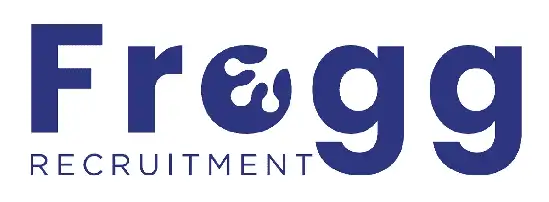Difference between contingent and retained recruitment?
What is the difference between contingent and retained recruitment?
Here at FROGG Recruitment, we specialize in Contingent recruitment. Contingent recruitment is more like traditional where the client supplies job specs and we do the recruitment.
How FROGG Recruitment can assist you as a valuable client.
The services we offer include the following but are not limited:
We recruit permanent and contract employees within various industries and sectors.
We work accordingly to your brief, job requirements, and skills, saving even more time.
They handle all the administration and communication between the employer and employee.
They can do all the checks like ITC, qualification, criminal, and employment
We can even arrange for more specialized checks and assessments.
They’re a trusted source of up-to-date market intelligence if it comes to market-related salaries.
As a reputable recruitment agency, we will also do all advertising, shortlisting, and interviewing.
We will only submit relevant applicants who match your job requirements.
You have the final decision on who you employ, it’s all up to you. We can only advise.
The recruitment and appointment process progresses efficiently. We work on a contingent recruitment service which means you pay when the candidate starts.
They offer exceptional after-service, meaning we continue to grow and build client relationships.
Finding a quality candidate who’s a great fit for your BUSINESS can often be a time-consuming task. There are a variety of recruiting agencies available to handle this responsibility for you. Learn what contingency and retained recruiting are. Discover the difference between the two, and review tips to help you decide which is right for your business.
Contingency recruiting involves hiring a recruiting firm to locate candidates to fill lower to mid-level open roles. Companies may hire more than one contingency recruiting firm to help quickly find a great fit for the position. They often do this to obtain several resumes for the role. To give themselves plenty to choose from or to hire several people to fill certain positions.
For instance, if a company’s looking to fill five content writer positions. They’ll hire several contingency recruiting firms to find many potential candidates to fill all the open spots. The company’s human resources team may also conduct their own recruitment efforts to ensure they’re reaching a wide audience.
What is retained recruiting? How is it different from Contingent recruitment?
Retained recruiting refers to retained search agencies that often recruit for executive and senior-level roles. Additionally, many of these recruiters are expected to have advanced knowledge of the industry they’re in to better understand what the company needs in a great employee. Moreover, these recruiting firms often charge a placement fee based on the annual salary their candidate receives when they’re hired. Furthermore, the fee amount varies depending on the expert level of the recruiting firm and recruiter you work with.
To ensure your employees are well-trained and prepared for their new role, some retained recruiting firms also provide coaching, training, and onboarding training sessions. This ensures the employee is more aware of their job duties by their first day and removes this responsibility from your HR team to allow them to focus on big-picture tasks. Retained recruiting firms work on an exclusive basis, so they’re the only recruiting company you’re allowed to work with.
Differences between contingency and retained recruiters
There are various differences between contingency and retained recruiting firms. Common differences include:
Payment methods
Each of these recruiting firms follows different procedures when it comes to charging for their time. Contingency search firms typically recruit for your company for free and don’t receive payment for their work until their candidate is hired. This usually means they’ll work hard to provide you with many candidates at once to increase the chances of you selecting their selections.
Payment for Retained Recruitment – There are usually three sections of payment you’ll make to retained recruiting agencies. The first is the retainer you’ll pay when the search first begins. The next is on a certain milestone date that you agree on with the recruiter beforehand. Your final payment is provided when the candidate is successfully hired at your company. If the new hire leaves before an agreed-upon date between you and the recruiter, they offer a guarantee to replace that candidate with someone who has similar or more advanced skill sets. We do Contingent recruitment services and not retained recruitment, a big difference in paying invoices.
Relationship with the company
When you work with a retained recruiting agency, you’re essentially establishing a long-term relationship with them. Many retained recruiting firms require companies to sign an exclusivity form stating that they’ll only work with their agency to find and hire new candidates. They’ll take their time getting to know your company, industry, and hiring needs better to find the best candidates for you.
If you hire contingency firms, you typically have the option to employ several different ones to increase your influx of qualified candidates. This means the contingency firm usually works briefly with you to establish your needs and preferences for the role before finding several potential candidates. They don’t often have a close relationship with you, so you’re able to easily move on to a different firm once your job search process is over.
Quantity vs. quality
Retained recruiting agencies are more focused on finding a handful of quality employees who are perfect for the role. They spend a significant amount of time evaluating your business’ needs, locating talented candidates, and preparing candidates for their upcoming interview with you. This guarantees you’ll find an impressive candidate who aligns well with your company goals, values, and job responsibilities.
Contingency firms focus more on getting you a large number of candidates who could potentially be great fits for the position. Many of these recruiters review the needs and preferences listed on your job descriptions and find candidates with resumes that contain a few keywords matching that information. This helps them provide you with a significant amount of candidates with relevant skill sets and qualifications, but it doesn’t guarantee that these candidates are great fits for the position and company.
Tips for considering which type of recruiter is right for your business
Follow these tips to help you determine which recruiting agency to hire to help you fill your open positions:
Determine your job search goals
Before you pick a firm, sit down with your team to determine your company’s recruitment goals. If your organization is smaller and doesn’t yet need to hire a significant number of employees, contingency recruiting could be the best temporary option for you. If you have multiple positions to hire on an ongoing basis as your business grows, consider using a retained recruiter. They’ll work to build a relationship with you and will recruit strong talent when needed.
Consider the seniority level of the position
If you’re searching for a candidate with an advanced skill set who will work in an executive or leadership role, retained recruiting is the best option. They’ll conduct extensive research on candidates with impressive leadership skills and plenty of experience. This ensures you hire an impressive candidate who will make logical and effective big-picture decisions for your company. For lower to mid-level positions, consider hiring a contingency firm to help fill them.
Establish your timeline and urgency of the role
Think about how soon you’d like to fill your open positions. If you have urgent tasks that need to be completed soon for your company, a contingency recruiter will help you quickly find someone with the skill set to complete those tasks. Work with a retained recruiter if you have plenty of time to assess candidates and make sure the one you’re hiring is perfect for the role.
Decide how many employees you need to hire
Contingency recruiters are great at finding several candidates to fill your open positions. If you have multiple roles that need you need to fill soon or if you’d like a large selection of qualified candidates to choose from, find a few contingency recruiters with great ratings to assist you in this job search.
Finding the best recruiting firm for your company depends solely on the hiring needs and preferences of your organization. To help you get started, work closely with department managers who have positions they need to fill to determine what they prefer in an ideal candidate.
If you want to find out more about what we do, view Our Expertise. Follow us on our Social pages Facebook, LinkedIn and Instagram and be actively involved in newsletters and recruitment blogs.
Related Posts
-

Overcoming “Unconscious Bias” in Employing.
- 0 Comments
- 1195
Continue ReadingOvercoming “Unconscious Bias” in Employing.
Always aim to select the ideal individual for the position. Your choice to hire a candidate is based on their suitability for the position. Or at least, you think you are doing that. You sincerely think that your choice is the outcome of a deliberative process. And that’s entirely typical. Humans, however, are unaware that their choices are frequently skewed in some way. Overcoming “Unconscious Bias” in Employing is easier than you think, one needs to focus on what’s needed. Knowing How to improve your hiring process in 8 easy steps is very important.
Your decision-making is guided by an unconscious bias. a prejudice that affects employment decisions and whether you choose to work with “the right person” but that you’re not always conscious of.
What is unconscious bias?
The phrase “unconscious” or “implicit bias” refers to mental processes that enable people to behave in ways that support stereotypes even though our conscious minds would find that action to be in opposition to our moral code. Affinity bias, which occurs when people gravitate toward those who look, act, and think like they do, is closely related to unconscious bias.
Even in the early phases of hiring, you might be more influenced than you realize by a candidate’s résumé photo, name, or location. In other words, unconscious prejudice uses characteristics unrelated to the job to affect your choice, either favorably or unfavourably.
Why You Should Avoid Unconscious Hiring Biases
Biased hiring creates less diverse teams, even though diverse teams consistently outperform homogenous teams. In the end, unconscious bias may result in financial losses for your company.
Biased hiring practices can also increase employee turnover, which can cost a company up to twice the employee’s yearly compensation in lost productivity. Why is this topic Overcoming “Unconscious Bias” in Employing so important? It is crucial to understand the concept. Hiring staff can be a daunting task. If you follow the hiring guidelines it should not be that difficult at all. Top Recruitment agencies can assist with this, we are not bias-oriented and look for candidates that match the client’s requirements. Also important is to increase your employees’ work performance during periods throughout the year.
Bias-based hiring decisions—based on stereotypes, gender, physical attractiveness, etc.—can also have serious legal repercussions.
But fortunately, there are measures in place to lessen hiring discrimination (go straight to that part). Let’s first examine the most typical forms of hiring bias, though. Do any of these things ring a bell?
Common Types of Unconscious Bias in Hiring
Confirmation Bias
Confirmation bias occurs when we make an initial opinion of a candidate and then seek out and concentrate on data that confirms that impression. This involves ignoring red indicators that contradict our opinions and asking irrelevant, unimportant interview questions that validate our beliefs.
Attribution Bias
The propensity to blame a person’s actions on their personality rather than any external circumstances is known as attribution bias. In essence, it causes us to overvalue a person’s personality features and underestimate the impact of their unique situation. Still perplexed? As we explore this unconscious prejudice in greater detail, read on for some examples.
Affinity Bias
Affinity bias, also known as similarity bias, is the unconsciously occurring human propensity to seek out those with histories, interests, and beliefs that are like one’s own. While we may believe that we deliberately choose the individuals we associate with based on their moral qualities, the truth is that we often struggle to be unbiased in our choices of friends and acquaintances. People frequently gravitate toward others just because they make them think of themselves.
Halo Effect
The “physical attractiveness stereotype” and the “what is beautiful is also good” premise are other names for the halo effect. Overcoming “Unconscious Bias” in Employing the best candidate for the position at hand should not be the end of the world. It’s simply changing your mindset.
A form of cognitive bias known as the “halo effect” occurs when our overall opinion of a person affects how we feel and think about their character. In essence, your assessment of a person’s general impression (“He is nice!”) affects your assessment of that person’s specific characteristics (“He is also smart!”). People’s perceptions of one quality can influence their perceptions of other characteristics.
Horn Effect
In many ways, the horn effect is the exact opposite of the halo effect. The horn effect is a cognitive process whereby we quickly attribute unfavorable attitudes or behaviors to someone based on one element of their appearance or personality. Obese people, who regrettably are sometimes characterized as being sluggish, slovenly, or irresponsible, are an example of this. Hiring supervisors could have a “bad feeling” about someone right away based on their appearance, speech, or even body language.
Difference between the horn effect and the halo effect
Halo effect: A positive first impression that leads us to treat someone more favorably.
Horn effect: A negative first impression that leads us to treat someone less favorably.
Conformity Bias
When we consciously align our behaviors, beliefs, or attitudes with those of a group, conformity bias emerges. Other people can impact us even when they are not physically there because this transformation occurs in reaction to either real or perceived group pressure. For instance, how we perceive what other people are doing often determines how much energy we use at home, how much we pay in taxes, and how much we donate to charities.
One aspect of social influence is conformity, or the propensity to have the same views as the majority. The many ways that other people might affect our conduct are referred to as social influence. Small groups and society at large both exhibit a tendency to conform, which can be caused by both subtle unconscious influences and social pressure.
Gender Bias
Unintentional and automatic mental associations based on gender that are derived from customs, expectations, norms, values, culture, and/or experience are referred to as unconscious gender prejudice. Automatic associations are used in decision-making to quickly assess a person’s gender and gender identity and stereotypes. Organizations can work to combat gender bias and other forms of prejudice, so even when a person exhibits unconscious gender bias, this does not necessarily convert into prejudice in the workplace.
Affect Heuristics
This occurs when recruiters conclude a candidate’s suitability for the position without thoroughly weighing all the available data.
Simply said, you are making decisions about someone’s eligibility for a job based on unimportant, superficial considerations that have no bearing on how they would approach the task at issue. For instance, you might assume that someone is incompetent because of their evident tattoos or because they are overweight simply because you don’t like that personality attribute or trait of theirs.
Overconfidence Effect
When someone’s subjective judgmental confidence exceeds their objective judgmental accuracy, this impact is what happens.
For instance, when someone feels overconfident making employment decisions based on their gut feelings is a smart idea. Overconfidence is frequently the product of confirmation bias (see below), which makes people recall instances in which following their intuition resulted in a successful hire while ignoring or forgetting instances in which it failed.
Avoiding Unconscious Bias in Recruitment
When you aren’t aware you’re doing something, it can be difficult to quit. The good news is that you can recognize your prejudices and even acquire strategies for minimizing them.
Let’s examine the tactics that are successful in decreasing recruitment bias.
Awareness Training
Biases can occur during every step of the recruiting and recruitment process, from reviewing resumes to creating job descriptions to conducting interviews to extending an offer of employment.
Review job descriptions
According to studies, the language used in job advertisements and job descriptions is crucial for attracting a variety of talent. Even the choice of keywords can have a significant impact on the number of applicants for your open position. Words like “competitive,” “determined,” and “assertive” are likely to discourage female candidates, whereas “responsible,” “connect,” and “dedicated” seem to boost their response rates.
Reviewing your CVs blindly
By excluding any information that would tempt you to make judgments about applicants’ gender, color, age, or other characteristics, you can review applications objectively. You can evaluate CVs more objectively, unearth some hidden gems, and identify the most qualified individuals for your interview by removing this type of content utilizing software applications.
Standardize the interviews.
Interviews that are structured are twice as effective as those that are not, according to research. You can lessen interview prejudice by posing identical questions to every applicant.
In conclusion, even if we sincerely want to increase diversity in our employment process, unconscious bias persists. Though we may not be able to eliminate our unconscious prejudice, we can always begin by attempting to understand how it influences our hiring decisions. In the end, we’ll be more aware of it when it does occur. For more trending article topics and related content, follow our social pages Facebook, LinkedIn, Instagram.
-

Cover Letter do’s and dont’s
- 0 Comments
- 3098
Continue ReadingCover Letter Do’s and Don’t.
When you apply for a job, you frequently submit a cover letter along with your CV/resume. It is a chance for you to market your application and establish yourself as a qualified candidate. It is referred to as a “letter of introduction” or an “application letter.” Your cover letter shouldn’t be a carbon copy of your CV/resume. It should rather explain why you are the best candidate for the position based on the qualifications shown on your CV. Let’s we discuss the cover letter do’s and don’ts.
Do’s of a Cover Letter.
Demonstrate that you have done extensive research.
Conduct thorough research before putting pen to paper for your cover letter. To achieve this, go beyond simply reading the job description. Your research will give you invaluable context and background information. After all, you want to ace the interview and get a job offer right? However, understanding more about the company you want to work for will help you decide how to change the tone of your cover letter. More and more companies are investing in mastering the factors that drive Job Satisfaction.
Here are some details you might want to include:
The name of the person likely to receive your application.
The position you’re applying for.
What the corporate culture of the company is like.
Their standing in the industry and top rivals
Any noteworthy developments or news in the industry recently
The aims and objectives of the business
Whether the business has any difficulties
2. Make a compelling opening statement to get their attention.
As with any writing, the goal is to immediately capture the reader’s interest to avoid losing them. Think outside of the box because many other candidates will use the cliché “I’m applying for this role because…” What makes you unique? What is the most interesting fact about you that people should know? Try to express that you are really thrilled about the position and are a good fit for it.
Think creatively, but we advise against using humour. Although it’s acceptable to be humorous (yet consider each organization individually), keep in mind that this is a professional job application.
3. Demonstrate your contribution’s worth to the business in a clear manner.
This is a broad generalization, but the goal of recruiting a new employee is to locate someone who can assist the company in solving difficulties. Your cover letter should demonstrate to hiring managers how you can contribute to the team or department you’ll be joining by helping them resolve issues. Below we discuss the cover letter do’s and don’ts.
The most effective method to do this is to discuss how your prior professional experience has prepared you to handle obstacles in your career. Thereafter relate those experiences to the position and organization you are applying to.
4. Emphasize your passion for the position.
This new employment opportunity is thrilling since it gives you the ability to advance your career with like-minded coworkers. This is well related to job satisfaction for you as an employee. While working for a business you’ve long liked. You sincerely desire the position. If not, you wouldn’t be applying, right?
Make that very apparent in your cover letter, then. Many other applicants will have the necessary qualifications, some even more qualified than you. The hiring manager will be looking for excitement and commitment to the position. Be sincere and put all your heart into the cover letter; sincerity sells.
When writing, try to utilize language that the hiring manager who will likely review your application would use when speaking with clients. You might need to conduct a little extra research to fully understand this.
5. Say more by saying less.
You might be wondering how much space your cover letter should take up. You cover letter should be no longer than one side of an A4. If it’s longer, why not shorten it? You can practice a written sense of self-management here.
Keep in mind that CV already has a ton of information. Everything that is on your CV is not to be repeated in your cover letter. You can reiterate crucial points that are directly related and relevant to the position. Otherwise, avoid repeating your abilities and prior experience. If you are successful in doing that, you will have more freedom to express your enthusiasm for the position and the letter will be brief enough for the hiring manager to skim it.
Don’ts of a cover letter.
Avoid these common cover letter mistakes:
Avoid reiterating material from your resume.
Certain cover letters only restate the resume’s content in writing form. Think about the benefits a cover letter can give to your application. Make sure it contains additional information not found on your resume and further establishes your position as a candidate. Always make sure to present an updated resume, this is crucial as your interest will show.
2. You claimed that the position would help you advance your skills.
Even while it very well may be the case, it is not appropriate to mention in your cover letter how much you would love this position because it would allow you to advance professionally. Keep in mind that you should highlight your strengths rather than how this position will benefit you.
Some applicants spend a significant amount of the space in their cover letter describing why they believe the position is ideal for them or how long they have desired to work there. Even though the data is flattering, you could want to add useful data that emphasizes your strengths as a worker and what you have to offer.
3. Don’t concentrate on your existing position or qualifications.
Your career history, including your schooling, is valuable. Instead of repeating it, use the space in your cover letter to explain why it is important. Instead of listing your degrees, for instance, describe what you learnt and any skills you acquired during the process. Describe how your knowledge and talents are a benefit to the business.
4. Do not submit an unrevised cover letter.
Your cover letter serves as your introduction. If there are any spelling or grammar mistakes in your letter, that will be the company’s first impression of you. Write several drafts of your cover letter as many times as necessary before choosing the one that will be submitted.
5. Avoid using too many keywords.
Some software detects when a text contains an excessive number of a particular keyword and either rate it poorly or discards it. Write your cover letter with well-structured sentences and planned thoughts. Make your information count because a real person will read your cover letter after it passes the software assessment.
In conclusion, although cover letters are not usually needed, they are used by hiring managers to evaluate an applicant’s qualifications, experience, and background. Writing an excellent cover letter requires demonstrating how your professional background fits the requirements of the available position and the company’s culture. For more related topics or advice follow our social pages, Facebook, LinkedIn and Instagram


